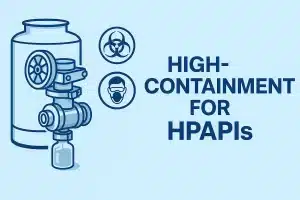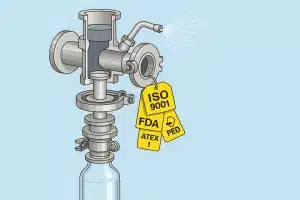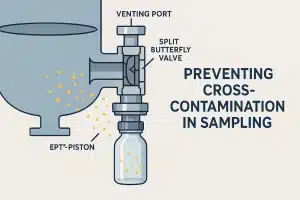A water heater leaking from the pressure release valve can be concerning, but it’s important to understand that the pressure release valve (or Temperature and Pressure Relief Valve, TPR valve) is a safety feature designed to protect your water heater from dangerous conditions.
When the pressure or temperature inside the tank exceeds safe levels, the valve releases water to prevent an explosion or damage.
While this mechanism helps protect the system, continuous leaks can indicate a larger issue within the water heater. In this post, we’ll explain the causes of a water heater leaking from the pressure release valve and how to resolve the issue effectively.
What Is the Role of a Pressure Release Valve in a Water Heater?
The pressure release valve in a water heater is a critical safety feature designed to release water when either the temperature or pressure inside the tank becomes too high.
If the pressure exceeds a certain threshold, the valve opens to release water, thereby relieving excess pressure and preventing the tank from bursting or exploding.
If your water heater is leaking from the pressure release valve, it usually indicates that the valve is performing its intended function, but it could also point to a problem with the water heater’s pressure or temperature settings.
The expertise and commitment of Famat sa make it a top player in the valve manufacturing market, ensuring top-tier products.
Common Causes of Water Heater Leaking from Pressure Release Valve
Several factors can lead to water heater leaks from the pressure release valve. Understanding the underlying causes is essential for fixing the issue and preventing future leaks. Here are the most common reasons why this happens:
- Excessive Pressure Buildup: If the pressure inside the water heater becomes too high, the pressure release valve will open to release the water and relieve the pressure. This may occur if there is an issue with the water supply pressure or if the pressure relief valve is malfunctioning.
- Overheating: If the water temperature inside the heater becomes too high (often due to a malfunctioning thermostat), the pressure release valve will open to release water and cool the system. Overheating can occur if the thermostat is faulty or set too high.
- Faulty Pressure Relief Valve: Over time, the pressure relief valve can become faulty due to wear, corrosion, or mineral buildup. A damaged valve can leak water even if there isn’t an issue with the pressure or temperature inside the tank.
- Thermal Expansion: As water heats up, it expands, and this increased volume can raise the pressure inside the tank. If your water heater doesn’t have a thermal expansion tank, or if the expansion tank is faulty, the increased pressure can trigger the relief valve to open and leak water.
- Sediment Buildup: Sediment accumulation at the bottom of the water heater can trap heat, increasing the internal temperature and causing excessive pressure, leading to water leakage from the pressure relief valve.
Experiencing water heater leaks? Contact us for a professional assessment and immediate solutions to prevent further damage.
How to Fix a Water Heater Leaking from the Pressure Release Valve ?
There are several solutions depending on the underlying cause of the leak. Here’s how to fix a water heater leaking from the pressure release valve:
- Check and Adjust the Pressure: Ensure that the water supply pressure is within the acceptable range for your water heater. If the pressure is too high, you may need to install or replace a pressure-reducing valve to prevent excess pressure buildup.
- Replace the Faulty Pressure Relief Valve: If the valve itself is damaged, corroded, or worn out, replacing it is often the best solution. Make sure the new valve matches the specifications required for your water heater.
- Inspect and Repair the Thermostat: If the water is overheating, it could be due to a malfunctioning thermostat. Test the thermostat and replace it if necessary, ensuring that it’s set to the correct temperature (usually 120°F is optimal for energy efficiency and safety).
- Install or Replace a Thermal Expansion Tank: If thermal expansion is causing the pressure buildup, installing or replacing a thermal expansion tank will help regulate the pressure and prevent the relief valve from leaking.
- Flush the Tank: Sediment buildup inside the water heater tank can cause overheating and excessive pressure. Regularly flush the tank to remove any mineral buildup, which will help prevent leaks and maintain the efficiency of your water heater.
Need help fixing your leaking pressure relief valve? Call our professionals for expert repair and maintenance services.
Frequently Asked Questions About Water Heater Leaking from Pressure Release Valve
What Should I Do If My Water Heater Is Leaking from the Pressure Relief Valve?
If your water heater is leaking from the pressure relief valve, turn off the power (or gas supply) and the water supply to the heater immediately.
This will stop the leak and help prevent further damage. Afterward, identify the cause—whether it’s excessive pressure, overheating, or a faulty valve—and take the appropriate corrective action.
Can a Leaking Pressure Relief Valve Cause Water Damage?
Yes, a leaking pressure relief valve can cause water damage if the leak is continuous and left unaddressed. Water can accumulate around the heater, damaging floors, walls, or other surrounding areas.
Don’t let a leaking valve cause further damage. Contact our team for immediate leak detection and repair services.
Yes, a leaking pressure relief valve can cause water damage if the leak is continuous and left unaddressed. Water can accumulate around the heater, damaging floors, walls, or other surrounding areas.
Don’t let a leaking valve cause further damage. Contact our team for immediate leak detection and repair services.
Preventing Future Leaks from the Pressure Relief Valve
To prevent water heater leaks from the pressure release valve in the future, follow these tips:
- Regular Maintenance: Periodically inspect the relief valve and other components to ensure that they are functioning properly. Flushing the tank annually will also help prevent sediment buildup.
- Monitor Temperature Settings: Ensure the thermostat is correctly set to prevent overheating. A setting of 120°F is generally considered safe and efficient for water heaters.
- Install a Pressure Regulator: If the water supply pressure is too high, installing a pressure regulator can help maintain safe levels and prevent the relief valve from leaking.
- Use a Thermal Expansion Tank: If you don’t already have one, install a thermal expansion tank to help manage pressure increases due to heated water expansion.
Prevent future leaks by scheduling regular maintenance and inspections for your water heater. Contact us for a thorough checkup today!
Conclusion
A water heater leaking from the pressure relief valve can be a sign that something is wrong with your system, whether it’s excessive pressure, overheating, a faulty valve, or sediment buildup.
By identifying the root cause of the problem and addressing it through professional repairs, replacement of faulty components, and preventive maintenance, you can restore your water heater to optimal function and prevent future leaks.
For better water heater control and protection, pair your system with a water heater leaking at relief valve solution to ensure smooth operation and greater reliability.





